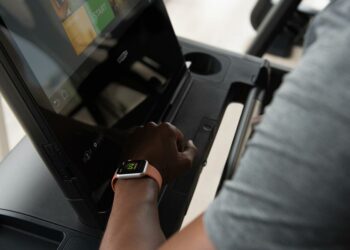Representation mode is an iPhone 7 highlight that has been supercharged in the iPhones X and 8, with the expansion of Portrait Lighting. The two highlights utilize profundity information from these iPhones’ double cameras, either to isolate the subject of the photograph from its experience, or to totally re-light the photograph to include show. Here’s the way to benefit as much as possible from them.
Using Portrait mode with iPhone
Utilizing Portrait mode is simple: you simply take the photograph, and the iPhone deals with it for you. Representation mode lives in the camera application alongside the other picture-taking modes like square, moderate mo video, and scene, so you simply need to swipe to pick it.
In the event that you generally need the iPhone camera to open in Portrait mode, rather than resetting itself to the customary camera each time you dispatch, at that point go to the settings application. Under Settings>Camera>Preserve Settings you can flip a switch that jam your last-utilized Camera Mode crosswise over application dispatches.
All photographs that you take with picture mode can be found in a unique consequently made organizer in the Photos application. Regardless of whether you don’t have an iPhone that can take Portrait-mode pictures, this collection will be made in the event that you have any Portrait pics in your library. For example, you may have an iPad utilizing the same iCloud Photo Library as your iPhone X, or some individual may have sent you a Portrait-mode picture by means of iMessage.
This collections sits in your library with other consequently made collections like those for scenes, Live Photos, et cetera.
Portrait selfies
On the off chance that you have an iPhone X, at that point you can likewise take Portrait mode selfies, because of the favor front camera that makes a 3D model of your face. To utilize this, you simply continue as though you were taking a standard selfie, just this one will look way better in light of the fact that the foundation will be obscured, influencing you to emerge in the photo.
Use Portrait Lighting
The huge new camera highlight on the iPhones X and 8 is Portrait Lighting. This uses the camera’s two-focal point profundity data to make a 3D model of the scene. This is joined with some extravagant AI shenanigans which let the iPhone work out’s what in the edge, so you can really re-light the sweep after the photograph was taken.
Like the early betas of Portrait Mode that kept running on the iPhone 7 or more, Portrait Lighting is as yet finicky. In the event that you have the correct child of photograph, it can look astonishing, however that doesn’t generally happen. For example, the Stage Light channel lights your face with a sensational spotlight, and drops the foundation into darkness. This can look astounding, yet in the event that the current characteristic light in your photo features the edges of your hair, you’ll have an unusual pale radiance after Stage Light does its stuff.
Picture Lighting is gotten to in the alter area of the Camera and Photos applications. Simply tap Edit when seeing a picture, and you can swipe to turn the virtual dial to pick your lighting impact. At this moment there is no adjusting accessible in this mode, yet you can include a customary channel, or make the typical alters, over the Portrait Lighting impact. That makes it entirely capable.
How to remove Portrait effects
You’re not stayed with the photograph you caught. Both Portrait Lighting and Portrait mode can be evacuated whenever later on. In case you’re comfortable with incapacitating the vivified some portion of a Live Photo, at that point you definitely know how to with of Portrait impacts. Simply open up the photograph, and tap Edit. In the recognizable alter screen, you will see a yellow board at the best: Portrait. To flip all profundity impacts on and off, simply tap this board.
Portrait mode future
Picture mode and Portrait Lighting show what happens when you consolidate equipment propels (double cameras, or the insane Face ID camera) with an intense PC, and some creative energy. Picture mode tackled an issue with cellphone cameras. They’re physically too little to get the pleasant foundation obscure that is so natural with customary cameras. Be that as it may, at that point, a similar innovation was repurposed to accomplish something no other camera can do — re-light pictures after they’ve been taken.





















